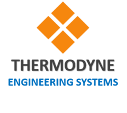Air pre heaters
Air Pre Heaters
Air preheaters are provided in boilers to preheat the combustion air.
Types
There are two main types:
- Tubular or recuperative air pre heaters
- Regenerative air pre heaters
Tubular or recuperative air pre-heaters are provided in boilers of a medium and small range of steam generation. This type of air pre-heater becomes very large in size if they have to be used in very high capacity boilers like 600 TPH of steam production and above.
Regenerative air per-heaters are compact and can have a stationary or rotating hood.
A combination of a tubular and regenerative type of air pre-heaters is used in very high capacity boilers. "The tubular being used for primary air heating and the regenerative used for the secondary air heating." In case the boiler designers do not want to go for a combination of tubular and regenerative air preheater, then they have a choice of the tri-sector regenerative air heater. Normally the ambient air is heated to about 300 to 350 0c. This results in a flue gas temperature drop of around 230 to 250 0c. So for each degree pick up in air temperature, roughly 0.8-degree drop in flue gas temperature is achieved.
Steam coil air pre-heaters are another type. These are used only during start up of the boiler to prevent low-temperature corrosion. This air heater does not contribute to improving the efficiency of the boilers but These are provided to improve availability. It is seen that during start up the chances of low-temperature corrosion is high, and hence the need to provide the steam coil air heaters is evident.
Benefits
- Increase Boilers Efficiency
- Reduced fuel consumption
- Reduced emissions
- Lower investment costs in comparison with conventional solutions
- Lower maintenance and servicing costs
- Superior quality standardised to Thermodyne Engineering Systems



Comments
Post a Comment